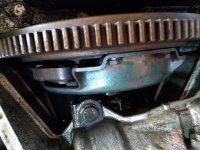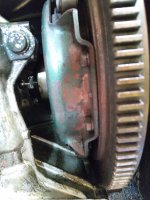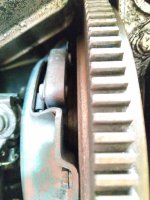Ok, I know this was a while ago but the problem still isn't fixed. I adjusted the clutch but ran out of thread on the cable so I added a spacer to give more adjustment. But then I found I didn't have the required free play at the top of the pedal and I'm still getting crunchy changes.
In my experience the several types of clutch component are interchangeable, at least between the "F/L" era and the "126" even though they can look very different from each other but a faulty clutch-plate could be implicated.
What you are experiencing may be the clutch actuating fork which could include it being loose on its pivot-shaft, the nylon bushings being missing or badly worn or a fault with the thrust-bearing.
It sounds like the gear-changing mechanism is trying to do its job so doesn't immediately come under suspicion but there might be issues inside the gearbox, particularly with the selector forks.
In the first instance I would disconnect the clutch-cable and return-spring and move the actuating-lever manually. There should be easy movement and then a definite stop as the thrust contacts the pressure-plate. You will be able to wiggle the lever and feel for any significant play






